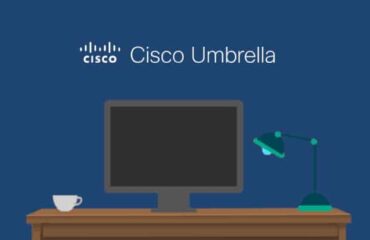
While use of collaboration tools is on the rise, email remains the top communication tool for workers as well as the top entry point for cyberthreats.
Key Points
- Email and collaboration tools remain where work happens, but they also are where risk is concentrated – technology is fallible and human error is inevitable, making organizations more vulnerable than ever.
- Workers should be able to work protected when using their email to conduct business, whether it is a stand-alone email tool or email that is part of a platform like Microsoft 365 or Google Workspace.
- Cybersecurity professionals looking to learn more about protecting their primary risk surface should visit Mimecast at Booth 1250 while attending Black Hat USA 2022.
The world is continually changing. How we work is continually changing. Our need to work together to come up with the great ideas that drive business and advance humankind remains constant. Whether it was the first telephones used by businesses to connect their offices, the first computers that were networked to help researchers exchange ideas and information, or the amazing little computers and communication devices each of us carry around with us all day every day, using technology to work together better has long been a driving factor for successful enterprises.
Where Work Happens
Today, the vast majority of workloads now exist in email and collaboration environments. We are seeing extraordinary adoption of newer tools like Microsoft Teams and Slack, though email remains the primary tool used for communication by business users. According to Radicati, there are currently 4.26 billion email users; the world will see a three percent increase in email users in both 2023 and 2024.
Are Both Email and Collaboration Tools Equally Secure?
At the same time, security leaders aren’t thinking about the risk surface related to collaboration security in the same way they focus on email security. For example, while most organizations ensure email attachments are scrutinized by many layers of security, those same organizations are likely not ensuring attachments sent via collaboration tools are scrutinized in the same manner.
Our Work Surface Is Our Risk Surface
Email and collaboration technologies are essential and compelling for us today, and we are more dependent on them than we’ve ever been before. This means cloud services like Microsoft 365 and Google Workspace are not only our work surface, but they also represent our risk surface.
The more reliant we are on any particular communication technology, the more apt malicious actors around the world will be to exploit our use of that technology. And while users may think using Microsoft 365 or Google Workspace is going to keep them safer because they feel they are secure, they remain susceptible to cyberattacks launched via malicious links or files. Ransomware, malware, and other cyberthreats are always just a click away.
Malicious Actors
It is no wonder that our email and collaboration tools are just as compelling for malicious actors as they are for us. Legitimate users can communicate with just about anyone, anywhere in the world to conduct their business. This means that malicious actors can reach these same people just as easily. More users mean more data – more personally identifiable information (PII) to be stolen and sold for profit on the dark web.
Human Error
In addition, user complacency can very easily lead to errors that benefit cybercriminals. Users are so accustomed to receiving and sending vast amounts of email every day that they tend to be highly responsive, quick to forward emails, click on links, and download files. This can lead to carelessness in reviewing the emails they receive and content they open. Users tend to trust by default when it comes to email, and malicious actors not only know this, they count on it.
Technology Fallibility
And while you may be thinking that all of this can be solved by installing the right security tool, even the most advanced technology remains fallible. No security tool is 100% effective. Our increased dependence on communication, and in turn, security technology, means that we absolutely cannot get detection of and protection from cybercrime wrong. There really is too much at stake. An organization’s financial security, reputation, and ability to conduct business are all reliant upon not falling victim to a cyberattack.
Risk and Complexity
All of this is coming at a time when growing organizations face the risk and complexity of having more people to train and protect, and more security tools to control that may not be fully understood by both admins and users.
Our increased dependence on cloud tools and platforms that may all be running on the same third-party cloud architecture prevents the complexity of building a proprietary cloud environment. It also means that many businesses may be using identical architecture and security to protect their most valuable assets. Once a threat actor knows how to use that third-party cloud architecture to access systems in one enterprise, it may be very easy to use that same technique to access systems in other enterprises.
So, the question remains: how does an organization ensure its security in the modern threat environment where malicious actors have vast resources to draw upon to ensure their attack makes headlines at your expense, users can become complacent, and security tools are not 100% effective?
Mimecast Addresses Complex Industry Challenges
The new Mimecast X1 Platform, which serves as the foundation of the fully integrated Mimecast Product Suite, provides the solution. Powering fully integrated services that deliver industry-leading protection for communications, people, and data, it makes information actionable and provides the reliability, resilience, and scale that the modern threat landscape demands.
The Mimecast X1 Platform:
- Surrounds communications with continuous protections, applying the right detections at the right time.
- Allows customers to grow securely and seamlessly and uncover user insights that can accelerate detection and response, providing the foundation for cloud-delivered security at scale.
- Provides a well-documented, consistent API gateway that enables third-party integrations of all kinds, delivering full extensibility and allowing threat data, policies, and practices to be applied or shared programmatically with other security and data solutions. It also supports accelerated integration with other security tools, such as SIEM, SOAR, XDR, CASB, and more.
by Thom Bailey




